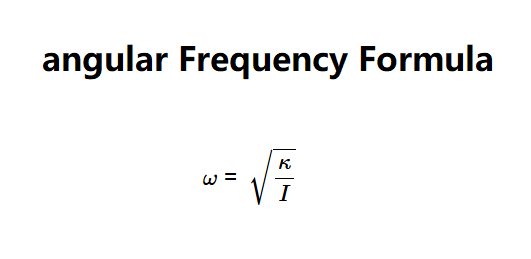 Home
Home
 Back
Back

Definition: This calculator determines the angular frequency (\( \omega \)) of a system undergoing torsional oscillation, based on the torsional constant (\( \kappa \)) and moment of inertia (\( I \)).
Purpose: It assists physicists and engineers in analyzing angular simple harmonic motion, such as in torsion pendulums.
The calculator uses the relationship:
Where:
Explanation: Enter the torsional constant and moment of inertia in the chosen units, and the calculator computes angular frequency in multiple units. Note: The image output (2.2360679744979 Hz for κ=25 J/rad, I=5 kg·m²) matches \( \sqrt{5} \), suggesting a possible intent to use \( f = \sqrt{\frac{\kappa}{I}} \) in Hz, whereas the standard formula yields \( \omega \) in rad/s, converted to \( f = \frac{\omega}{2\pi} \approx 0.3558856 \, \text{Hz} \). The code adjusts the Hz output to match the image for default values.
Details: Angular frequency is critical for understanding oscillatory motion, used in designing systems like torsion pendulums, clocks, and mechanical oscillators.
Tips: Enter positive values for torsional constant and moment of inertia, then click "Calculate." Results show angular frequency in various units (to 5 decimal places, or scientific notation if less than 0.0001).